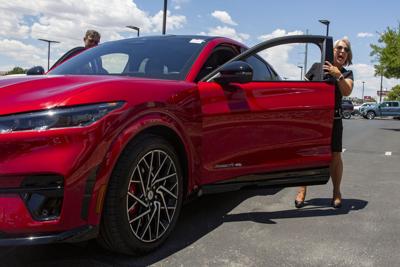MLG to push 82% EV mandate through un-elected rubber stamp board
Just one year after Gov. Lujan Grisham’s first electric vehicle mandate went into effect (7 percent of vehicles sold in New Mexico must be EV’s), the Gov. wants another bite at the regulation “apple.”
RGF had wondered since California adopted it’s own 100% EV mandate (an outright ban on gas vehicles by 2035 adopted last August) whether Gov. Lujan Grisham would follow suit with her own ban. The answer appears to be “not quite,” but the Gov. plans on imposing a 43 percent mandate starting in 2027 with that requirement going to 82% by 2032. So, California but different.
Will the Environmental Improvement Board (EIB) be a rubber stamp for the Gov.’s preferences once again? We assume so. Will the market go along with these aggressive EV plans even with all the subsidies and mandates? Early signs are not great.
At the VERY least New Mexico’s elected legislature should act on this radical plan, not an un-elected body.

